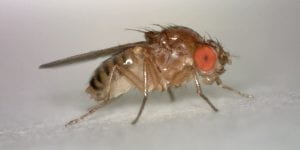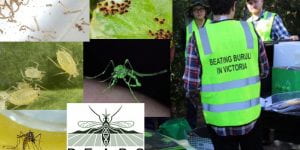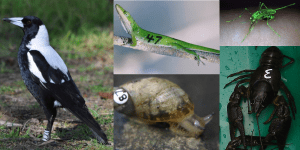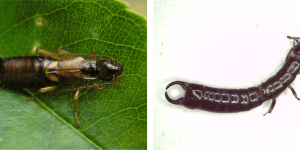pearg
-
Using genomics to determine the adaptive potential of populations
Words: Ary Hoffmann One of the central tenets of conservation biology is that high levels of genetic variation in natural populations is important for their long-term survival. High levels of variation allow populations to adapt to changing environments through evolution. This process is now recognised as being extremely fast when selection pressures are high. In […] -
MSc projects 2020 – Students wanted
We are seeking motivated MSc students to apply for several projects starting next year. Enquiries via pearg-queries@unimelb.edu.au Project 1/4: Exploring bacterial symbionts for agricultural pest control PEARG is researching ways to control important agricultural pests such as aphids and mites that cause millions of dollars in damage to crops each year in Australia. This project […]blogs.unimelb.edu.au/pearg/2019/06/14/msc-projects-2020-students-wanted
-
Cracking the kinship code: Measuring animal dispersal across generations with DNA
NEW paper! Dispersal is a key component of the ecology and evolution of animal populations. It allows animals to colonize new habitats, escape deteriorating conditions, and locate mates. When animals disperse and breed successfully in new habitats that are already occupied by the same species, there will be an exchange of genes. This exchange is […] -
Stowaway mozzies enter Australia from Asian holiday spots – and they’re resistant to insecticides
Original article published on The Conversation Words: Tom Schmidt, Andrew Weeks, and Ary Hoffmann We might not be able to use common insecticides to kill mosquitoes that arrive from other countries. from www.shutterstock.com Planning a trip to the tropics? You might end up bringing home more than just a tan and a towel. Our latest […] -
New open access paper: Morphological and molecular analysis of Australian earwigs (Dermaptera) points to unique species and regional endemism in the Anisolabididae family
Words and images: Oliver Stuart Link to open access paper Earwigs (Dermaptera) are a challenging group of insects to study. In Australia, earwigs are variously known as pests, predators of pests (so, beneficial insects), or both at once depending on the crop type and other particulars. The invasive Forficula auricularia (the European earwig) is the […] -
The insect apocalypse
A recent review paper in Biological Conservation by Francisco Sánchez-Bayoa and Kris Wyckhuys has sparked considerable media attention on the plight of insects and the need to conserve them. In amongst the noise, PEARGs own Linda Thomson was interviewed by The New Daily about what you can do in your own back yard to help. […] -
Sterile mosquito release leads to 80% population knock-down in Singapore
The National Environment Agency of Singapore released Wolbachia infected male mosquitoes last April in order to suppress the local population. The field study has been a fantastic success with an 80% population reduction achieved in the last nine months. Ary is a member of Singapore’s Dengue Expert Advisory Programme, providing expertise and guidance for the […] -
Hot enough?
With temperature records being smashed around Australia people are paying ever more attention to climate change. As Adelaide has set a new record maximum temperature ABC’s Adelaide reporter Malcolm Sutton interviewed Ary for an article, loosely based around our open access review in Austral Ecology -
An adventure in Alice at the AES conference 2018
Header photo: Marianne Coquilleau, Samantha Ward, Xuan Cheng, Josh Douglas, Tom Schmidt and Oliver Stuart Words: Oliver Stuart and Samantha Ward Introduction This past September was the 49th Annual General Meeting and Scientific Conference of the Australian Entomological Society (AES). The Society publishes an Australia-focused journal and maintains, through its membership, a network of professional […]blogs.unimelb.edu.au/pearg/2019/01/08/an-adventure-in-alice-at-the-aes-conference-2018
-
A long way to go for a small species
Words: Daronja Trense Images: Daronja Trense & Klaus Fischer One of the projects of my PhD is to investigate the genetic connectivity of the Copper butterfly (Lycaena tityrus) in the Ötzvalley of the European Alps. In summer 2018, we collected 186 butterflies to understand how the geological structure of the valley has influences the genetic […]blogs.unimelb.edu.au/pearg/2018/12/19/a-long-way-to-go-for-a-small-species
Number of posts found: 112








